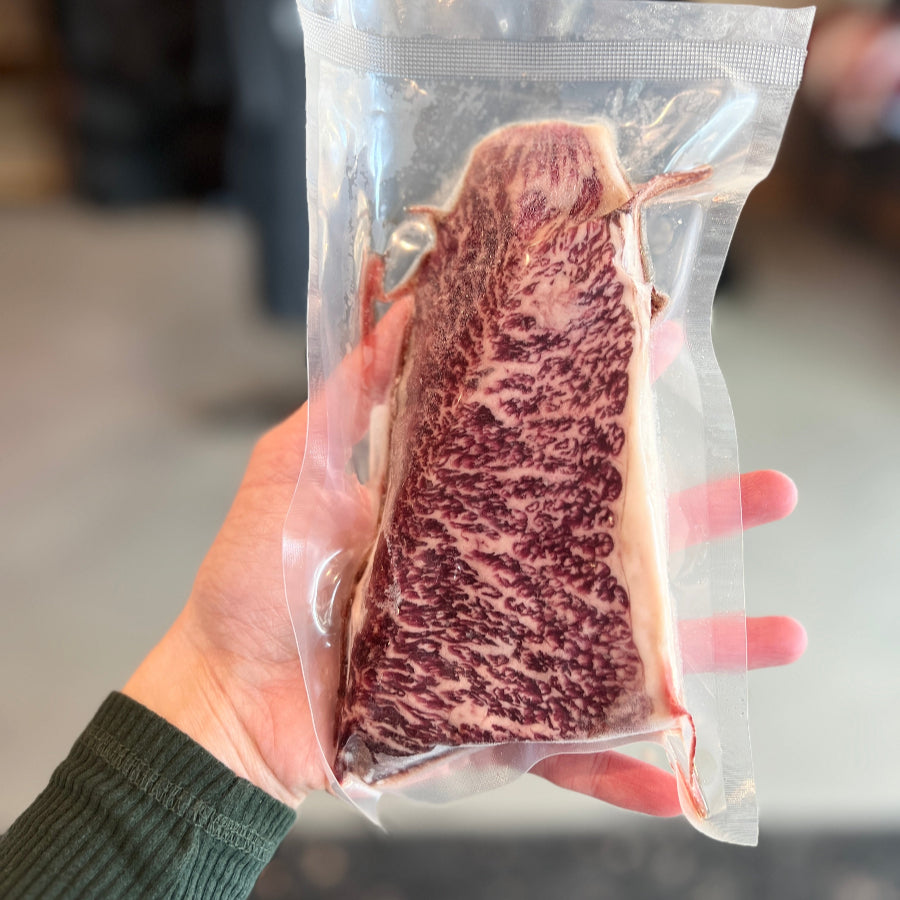
What makes Wagyu beef different?
Lone Crow Ranch LLCShare
If you are a beef connoisseur, you've probably heard of Wagyu beef. Wagyu beef has been gaining popularity in recent years, and as folks who raise Wagyu cattle, we hear a lot of misconceptions about it! This post is simply to inform casual carnivores about what makes Wagyu different.
What Is Wagyu Beef?
Wagyu beef comes from a specific group of Japanese cattle breeds. The word “Wagyu” literally translates to “Japanese cow” (Wa = Japanese, Gyu = cow), and it refers to four main breeds: Japanese Black, Japanese Brown, Japanese Shorthorn, and Japanese Polled. Japanese Black is the most common here, making up the majority of Wagyu you’ll find.
What sets Wagyu apart is the genetics. These cows are bred for their incredible marbling, that beautiful network of fat running through the meat. Marbling isn’t just for looks; it’s the key to Wagyu’s texture and taste.
Common misconception: We often have people tell us that beef labeled Wagyu in the United States is falsely labeled, because Wagyu can only come from Japan. This is false. Wagyu cattle were introduced into the United States in the 1980s, and fullblood Wagyu with traceable genetics have been bred here ever since! American Wagyu have genetics ranging from 50% Wagyu to 100% Wagyu- these genetics are certified by the American Wagyu Association.
Our Wagyu cattle are bred from our bulls with 100% Wagyu genetics!
How Does Wagyu Taste?
Okay, let’s get to the really important stuff, flavor!
In addition to having more fat in terms of marbling, Wagyu beef fat has a lower melting point than the fat in conventional beef, thanks to its unique composition. Specifically, Wagyu fat is higher in monounsaturated fats, especially oleic acid, compared to the more saturated fats found in most regular beef. This gives Wagyu fat a melting point that ranges around 77°F to 86°F, depending on the specific cut and marbling. That’s close to or even below human body temperature (98.6°F), which is why it literally melts in your mouth when you eat it.
Regular beef fat, tends to have a higher melting point, typically between 104°F to 122°F. This is because it contains more saturated fats, which stay solid at lower temperatures. That’s why regular beef fat can feel waxy or leave a greasy coating in your mouth—it doesn’t break down as easily when you cook or eat it.
Why Is Wagyu Beef More Expensive Than Regular Beef?
First, raising Wagyu cattle takes time and care. Our Wagyu are fed much longer than typical beef cattle- 600 days vs. the typical 150 days on a finishing ration. Wagyu are usually 1-2 years older than Angus are at the time of slaughter, because the age of the animal and it's time on feed are highly important to the level of marbling you get from the carcass!
Then there’s the supply issue. Wagyu cattle aren't filling up the conglomerate feed yards that supply the grocery stores with beef, they only make up approximately 0.05% of all the beef cattle being raised in the Unites States. If you only include fullblood (100%) Wagyu cattle, they actually only make up about 0.007% of beef raised in the United States.
Wrapping It Up
So, there you have it, the basics of Wagyu beef. It’s a masterpiece of genetics and care, with a taste that’s rich, tender, and unique.
